
Feel free to add tags, names, dates or anything you are looking for
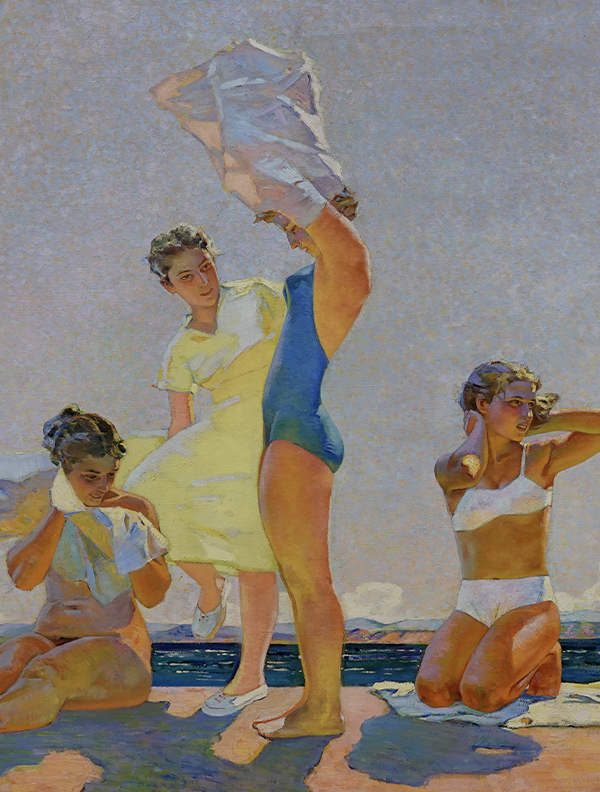
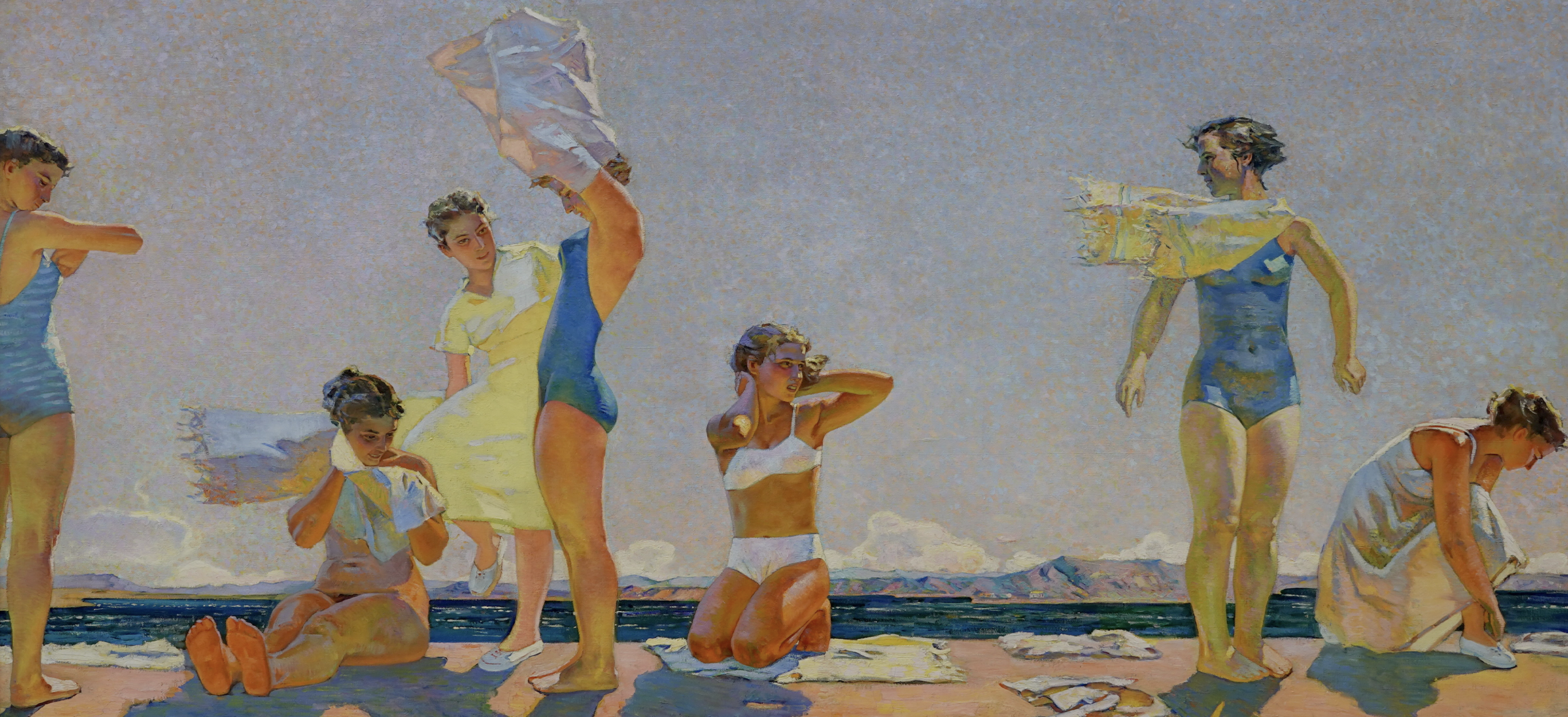
The creative period of the artist Guram Gelovani (1928–1986) fell within the so-called “post-Stalinist” era, a time when cultural developments in Georgia were still largely shaped by the ideological politics of the totalitarian state. While socialist realism remained the dominant artistic doctrine, a slight cultural “thaw” began to emerge.
Guram Gelovani was born in Tbilisi in 1928. He completed his formal studies at the Tbilisi State Academy of Arts under renowned teachers Ucha Japaridze, Mose Toidze, and Korneli Sanadze. From 1955, his work was regularly exhibited at both national and international exhibitions, and he soon gained recognition from Soviet officials. In 1963, Gelovani participated in the prestigious Paris Biennial. His paintings are housed at the Georgian National Museum and the Tretyakov Gallery in Russia.
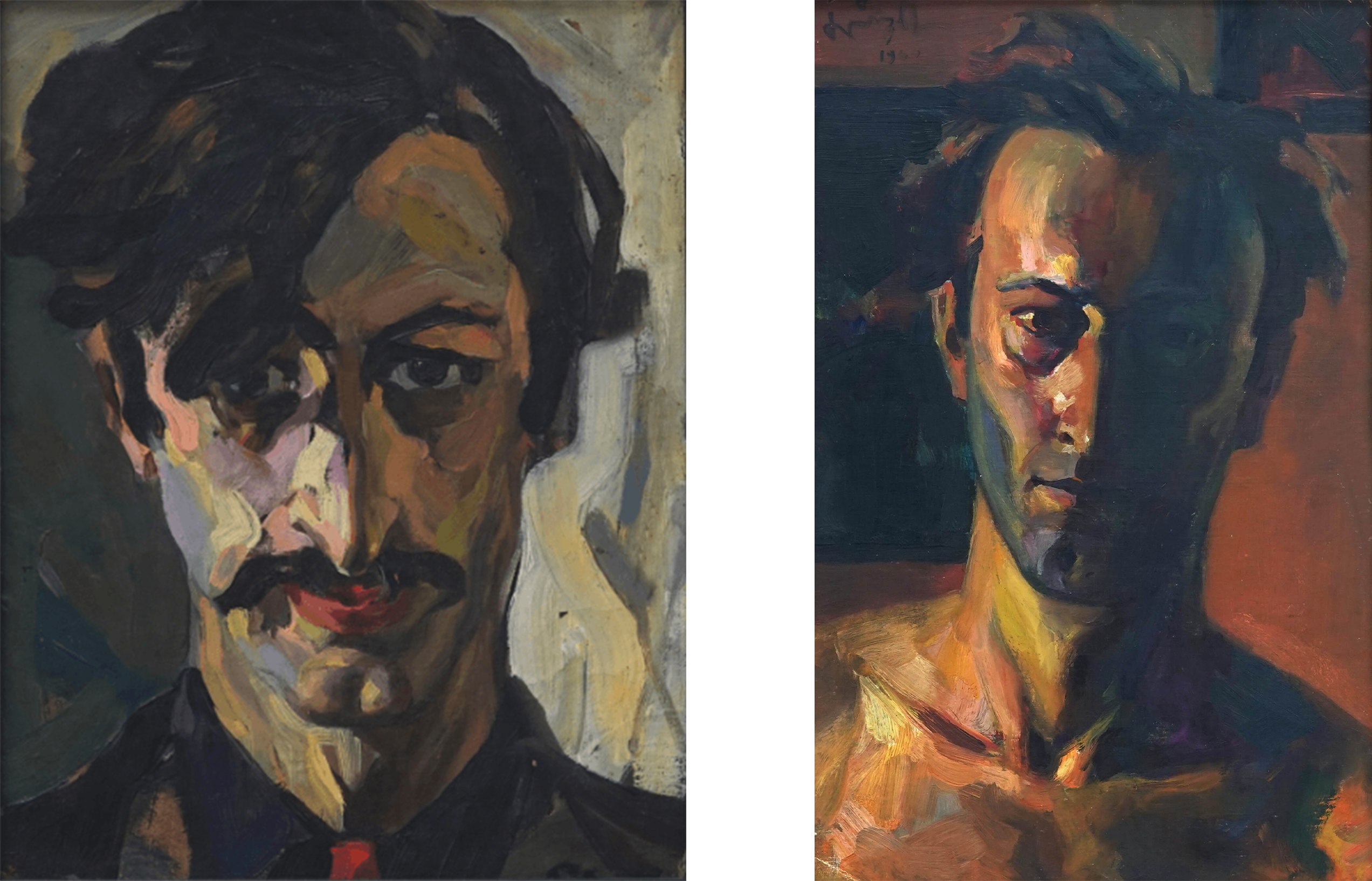
Guram Gelovani. Self-portrait. Oil, cardboard. 30x23cm. 1948. Family collection
Guram Gelovani. Self-portrait. Oil, cardboard. 48x32cm. 1960. Family collection
A truly objective assessment of any historical period requires a certain distance in time. In the 21st century, while the memory of the Soviet Union still lingers, the emotional intensity surrounding it has somewhat diminished. Attitudes towards the culture of socialist realism have shifted: was it merely kitsch, or did this era also give rise to works of genuine artistic value? For decades now, respected curators have shown a growing interest in socialist realism, striving to explore the artistic developments of the era beyond their ideological confines. In this context, Guram Gelovani represents a particularly compelling figure within the landscape of Georgian painting of the Soviet period.
Guram Gelovani’s artistic journey spanned nearly three decades, leaving behind a rich and diverse creative legacy. His body of work reveals a masterful artist with a broad creative range. In addition to his striking monumental panels, Gelovani portrayed lyrical landscapes and portraits rendered in a completely unique painting style. Each of these directions is significant, showcasing distinct approaches, technical excellence, and a unique artistic voice-be it highly professional academism, the traditions of Western European realism, Impressionism, or Post-Impressionism. Nevertheless, it is his monumental painting that secured Gelovani’s special place in the history of 20th-century Georgian art, marking him as a truly epoch-making figure.
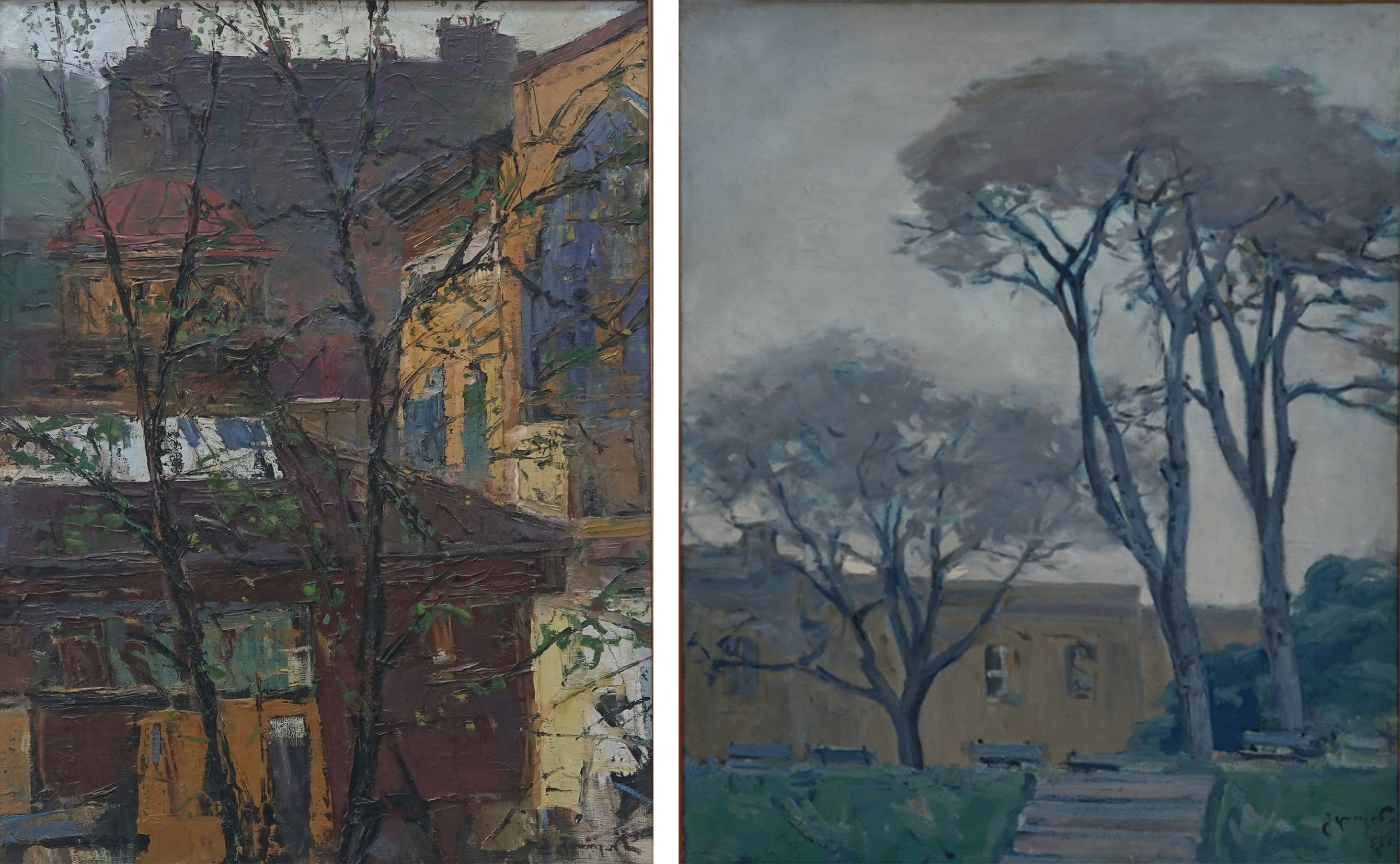
Guram Gelovani. Old Tbilisi. Oil, canvas. 75x57cm. 1948. Family collection
Guram Gelovani. November. Oil, canvas. 89x58cm. 1958. Collection of the Dimitri Shevardnadze National Gallery
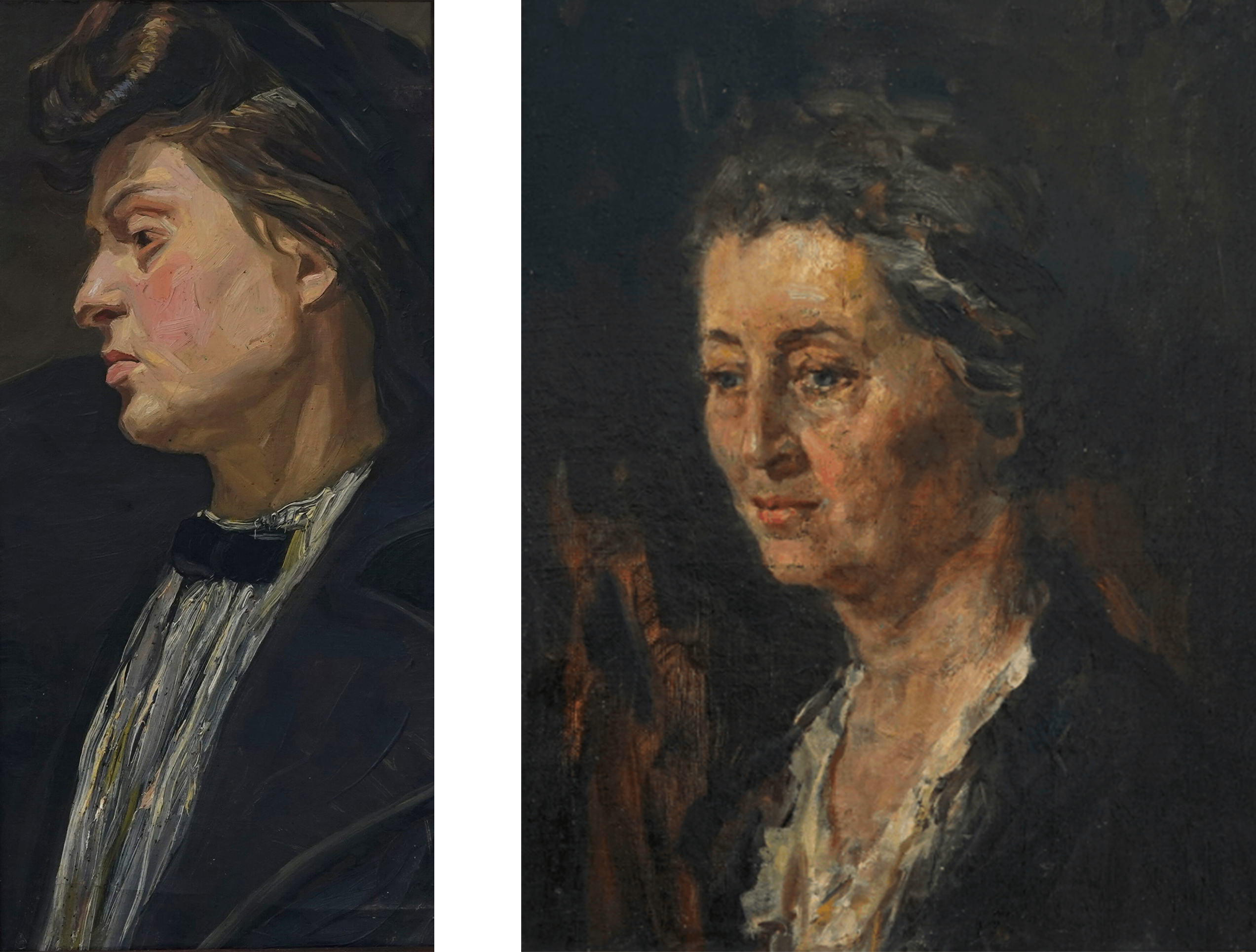
Guram Gelovani. Portrait of Wife. Oil, canvas. 44x21cm. .1952. Family collection
Guram Gelovani. Portrait of Mother. Oil, canvas. 51x42cm. 1958. Family collection
Historically, the monumental form is an organic part of Georgian painting. In the 1950s, it also emerged as a dominant trend across the Soviet Union. Consequently, one of the key directions in Georgian fine art became a sustained and natural engagement with monumentality, shaped both by tradition and the demands of the era.
In this article, we focus on this particular aspect of Guram Gelovani’s legacy. His monumental works not only reflect the spirit of their time, but also stand as examples of artistic excellence.
Socialist realism viewed modernism as unacceptable formalism, and established figurative, academic painting as the dominant artistic and representative method. The goal of propaganda art was to clearly and effectively communicate its message to the broad masses. Art was meant to evoke a sense of the "greatness" of Soviet achievements. Alongside portraits of political leaders, common themes included labor, sports, and industrialization.
Guram Gelovani engaged deeply with all of these themes. Each of his panels stands as a bold statement and a flawless example of masterful execution. The power of his work lies in the monumental expression of each topic, and the clarity with which the message is conveyed.
During the Soviet era, many artists were compelled to conform to ideological demands, leading to works of varying artistic quality within a single artist’s body of work. Works driven by personal creative inspiration often differ significantly from those created on government directives. Guram Gelovani, however, stands as a rare exception—an uncompromising creator even when working on state-mandated themes. His museum works, which carry socialist realist content, stand out for their exceptional artistic quality and technical mastery.
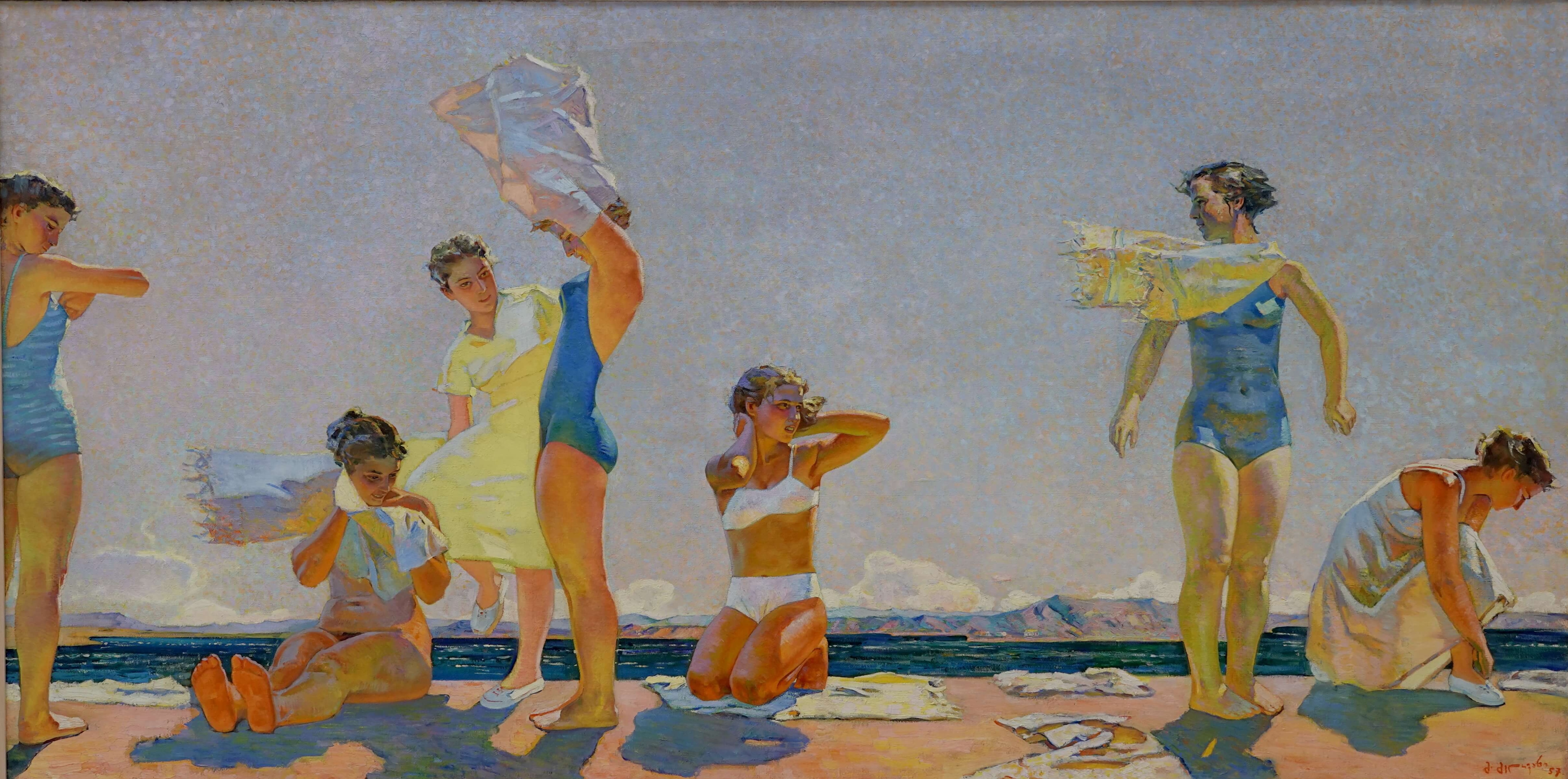
Guram Gelovani. Youth. Oil, canvas. 140x270cm. 1957. Collection of Shalva Amiranashvili Museum of Fine Arts
Guram Gelovani created his first masterpiece, Youth, in 1957. The painting depicts young girls relaxing on a beach—rendered in a monumental and generalized style that serves as a hymn to youthful vitality, joy, and physical well-being. By this time, Gelovani was already an accomplished maestro. The visual and expressive language of the painting is remarkably rich and multifaceted in detail. The frontally arranged figurative composition showcases Gelovani’s brilliant command of form and his distinctive expressive style. Equally compelling is the pictorial quality of the painting, which reveals a deep sensitivity to color, light, and surface. The painting, executed with a plein air effect, incorporates a variety of techniques—ranging from a pointillist approach to the background and environment, to relief-like sculptural textures and richly impastoed surfaces. Gelovani masterfully unites seemingly opposing principles: the static and the dynamic within the composition, and the decorative flatness of the pictorial plane, with a sense of airy, atmospheric depth. The result is a harmonious and visually compelling whole.
Gelovani completed his most monumental work, Morning of Industry, in 1961. Morning of Industry is striking for its poster-like laconism and powerful creative style. The bold, iconic composition effectively conveys its message, and it stands out as a prime example of the so-called “rigorous style” that emerged in Soviet painting. While the pathos imposed by the state may have been forced and insincere, the raw power of this work could only have been created with genuine belief. In this regard, Guram Gelovani's essay is significant, in which he speaks about the scientific and technical advancement of the contemporary period and the new space age* (G. Gelovani. I Want to Create. Art. 1962. No. 10).
Guram Gelovani. Morning of Industry. Oil, canvas. 240x400.1961. Collection of the Dimitri Shevardnadze National Gallery
Guram Gelovani's most notable artwork, Family from Dusheti, was created in 1962. The family portrait of a peasant from Dusheti is portrayed in a representative composition. Distinctly sculpted, the expressively characteristic figures pose before the audience, larger than life. The group portrait transcends the limitations of a single family portrait and depicts the heroic importance of the Georgian family, and of working people in general. Guram Gelovani's work clearly demonstrates a feeling of identity in the national artistic form. The Family from Dusheti, defined by these and other characteristics, may be considered a classic example of the art of that time.
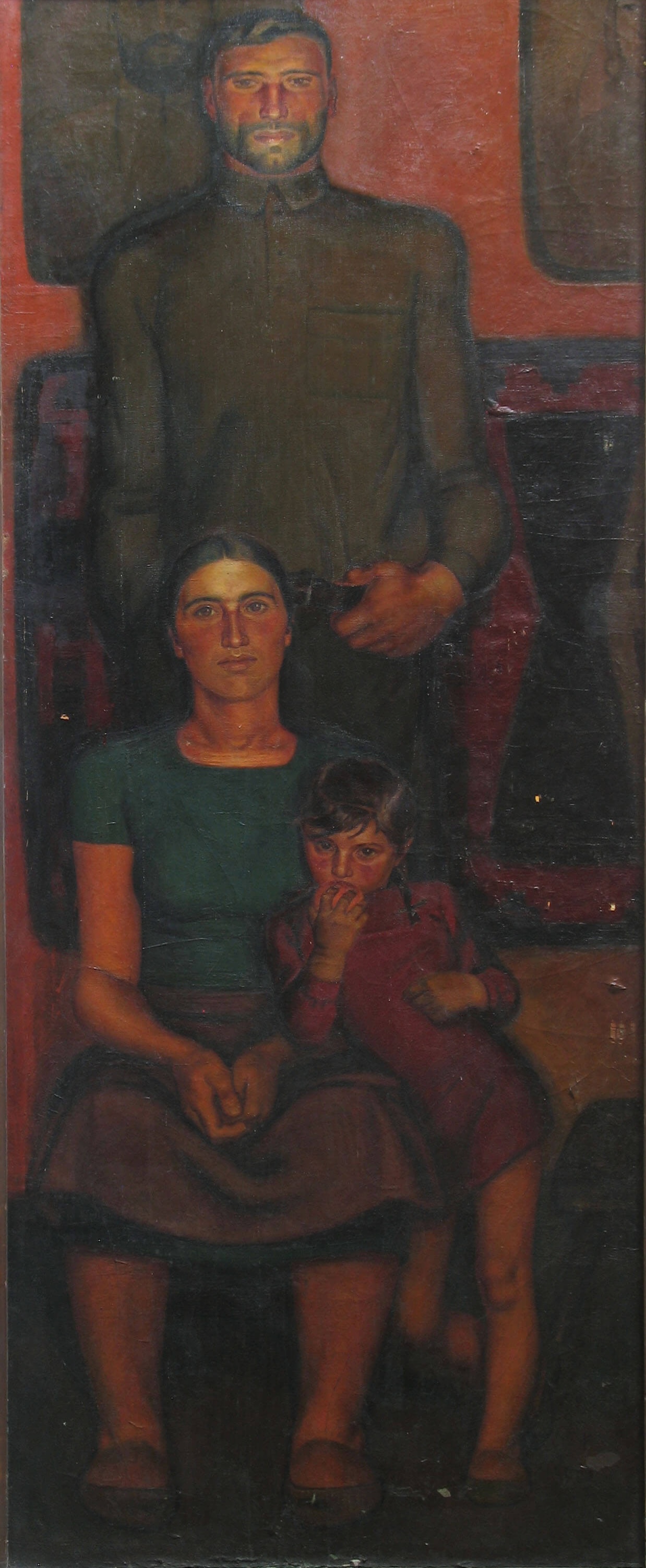
Guram Gelovani. Family from Dusheti. Oil, canvas. 258x100cm. 1962. Collection of the Dimitri Shevardnadze National Gallery
Other notable works from the 1960s include Portrait of Alexi Tusharauli, Female Collective Worker, and Woman from Dusheti.
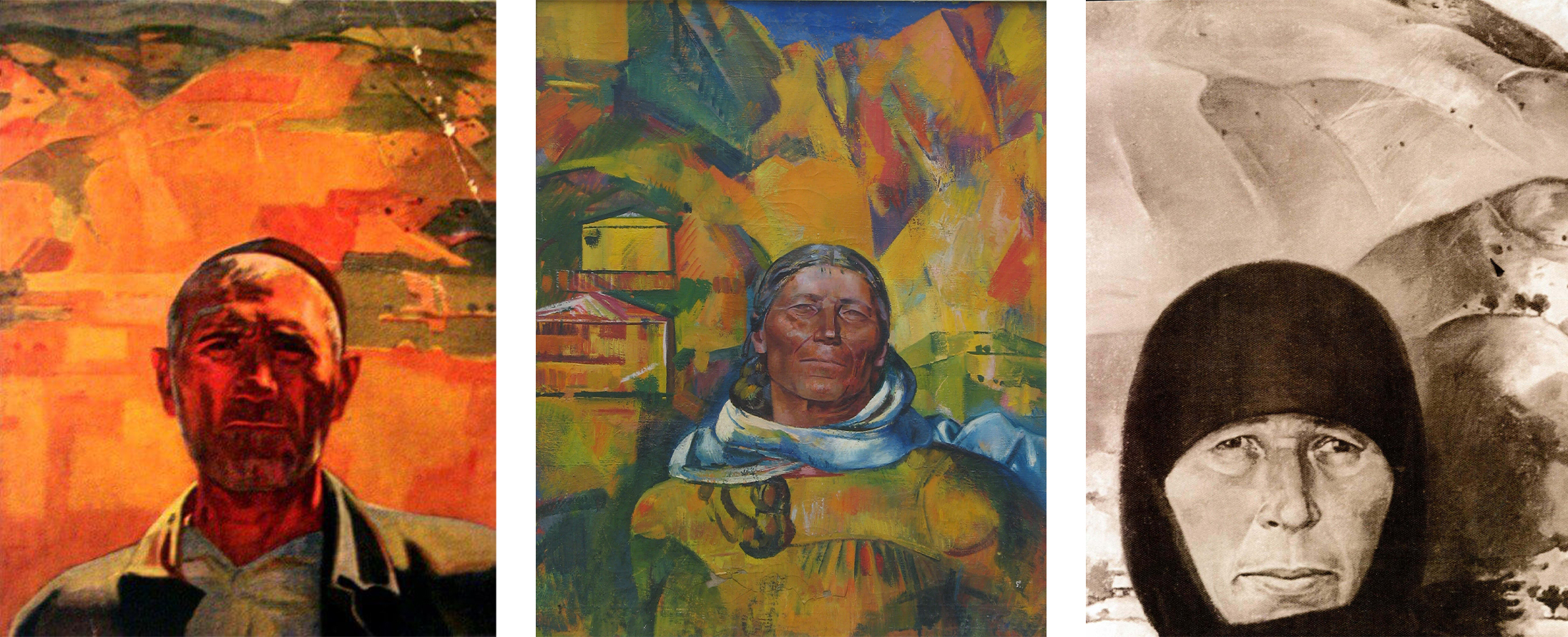
Guram Gelovani. Portrait of Alexi Tusharauli. Oil, canvas. 100x75cm 1964. Location unknown
Guram Gelovani. A Woman from Dusheti. Oil on canvas. 90x90cm. 1970. Location unknown
The compositional arrangement of these pieces, particularly the relationship between the figures and surroundings, bears a strikingly resemblance to key works of Georgian modernist paintings, such as Davit Kakabadze's Imereti-My Mother (1918).

David Kakabadze. Imereti - My Mother. Oil, canvas. 139x157cm. 1918. Collection of Shalva Amiranashvili Museum of Fine Arts
Gelovani’s figures are shown in close-up, with a distinctive appearance, and are depicted against a panoramic landscape. The backgrounds, while spatially expansive, are also rendered with a decorative flatness, as in David Kakabadze’s work. The illusion of space is achieved by disregarding the principles of perspective and color interaction. Similar creative interpretations result from the transformation of portraits of particular people into generic images, with varying nuances in each case, depending on the artistic stage and the task set by the artist.
People were physically devastated during the Soviet Union's period of ruthless repression and intellectual domination. As a result, it is difficult to fully separate ideological messaging from the portrayals of political leaders. Nevertheless, the portraits of Lenin by Guram Gelovani stand out for their artistic merit. Their remarkable expressiveness and monumental form merge the legacy of modernist art with refined professional academism, perfectly aligning with the weight of the “leader” theme.
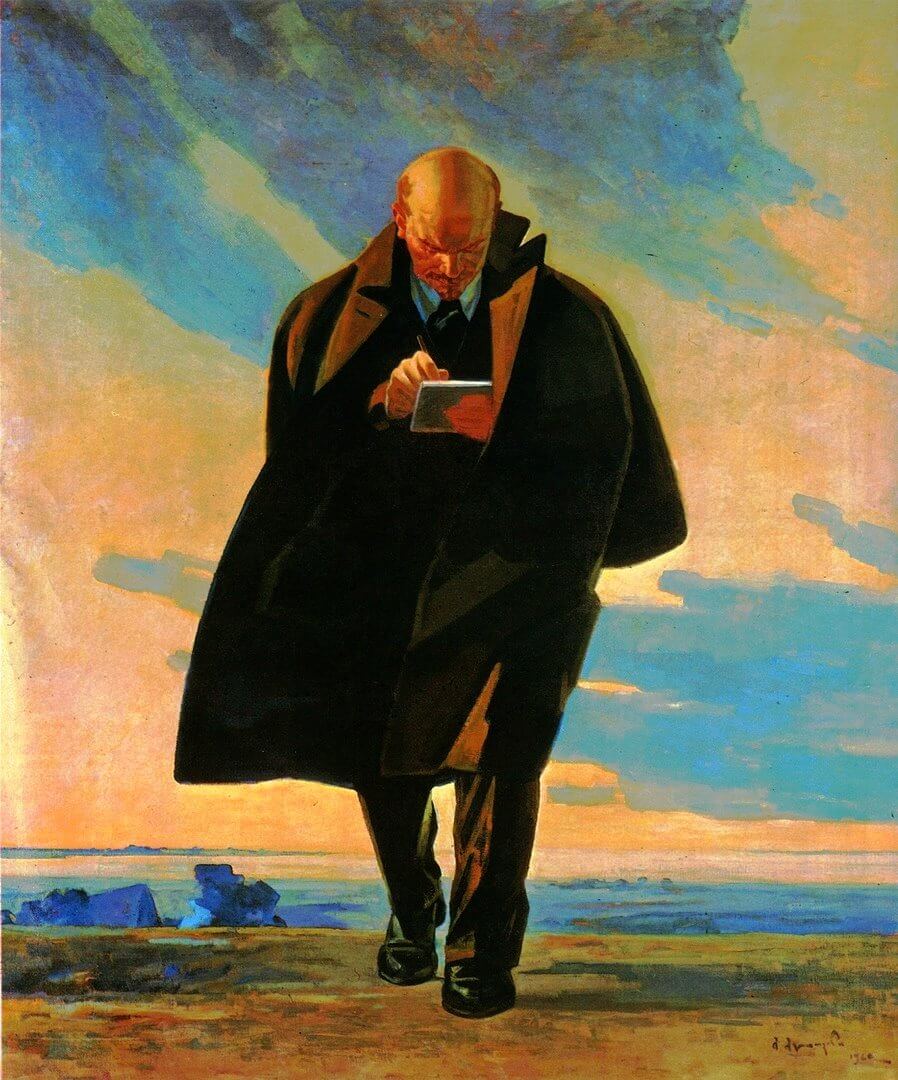
Guram Gelovani. Lenin in Razliv. Oil, canvas. 260x220cm. 1960. Collection of the Dimitri Shevardnadze National Gallery
Historical eras may pass, but their cultural legacies endure. History also preserves the biographies of the artists who shaped those legacies. Guram Gelovani lived and worked during a particularly difficult period, and it is likely his creative path was shaped as much by his exceptional talent as by his personal attributes.
An artist deeply rooted in culture, Gelovani often recited The Knight in the Panther's Skin, and regularly attended the Opera and Ballet Theater, yet he created his enormous panel-works in a small, modest studio. This brilliant artist had an extraordinarily profound and self-sufficient spirit, leading to a body of creative work that was consistently both sincere and uncompromising.